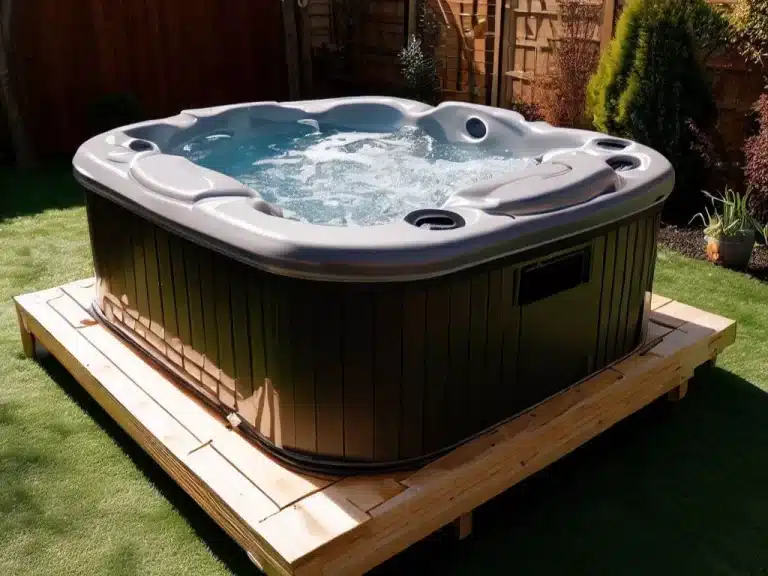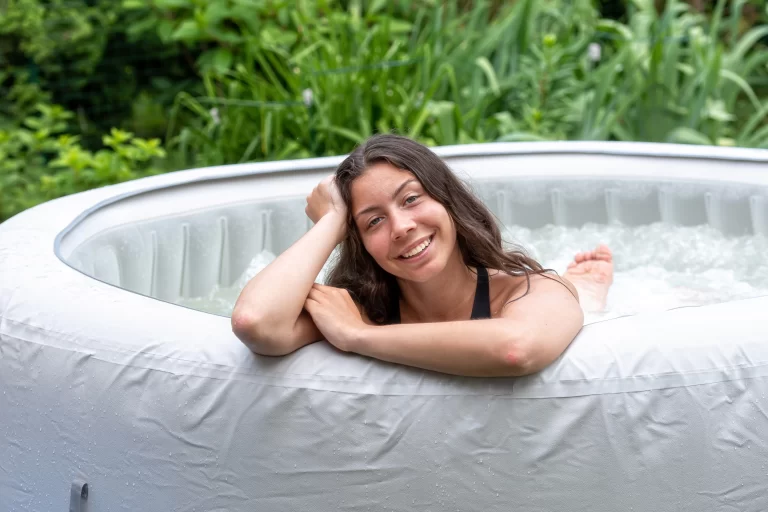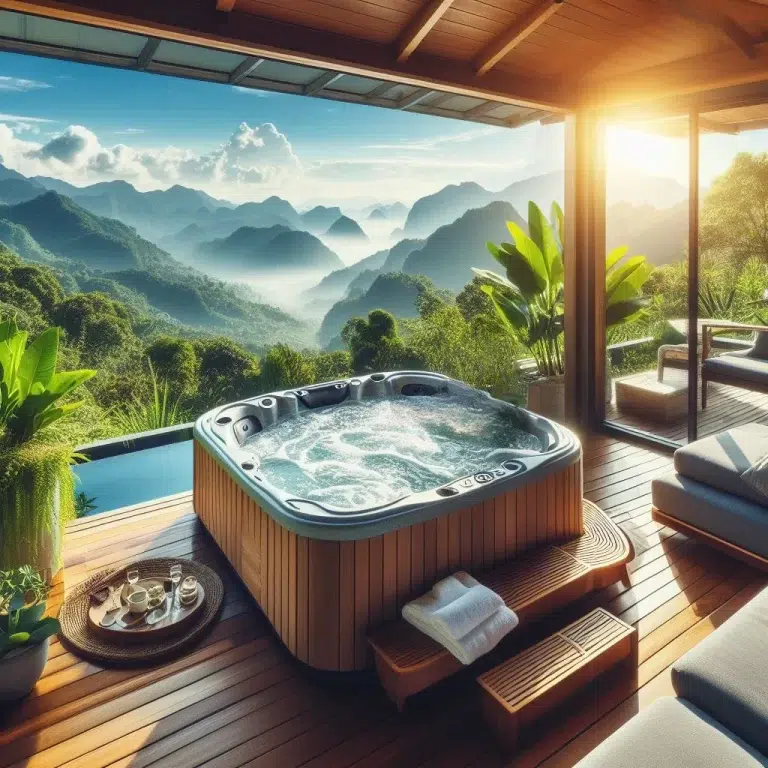5 Secrets to Enjoying Your Hot Tub Without Itchiness
Hot tubs are amazing for stress relief, but the dreaded itch can ruin it all! I used to get this awful rash after soaking, but now I know how to prevent it. This guide will show you how to enjoy itch-free hot tub time, from understanding the cause to choosing the right features. No more sacrificing relaxation for irritated skin – time to create my perfect hot tub oasis!
So, you’ve invested in the ultimate relaxation oasis—a hot tub. But there’s one annoying hitch: the itchiness that sometimes follows a soak. Fear not! In this article, I will unveil five secrets to ensure your hot tub experience remains blissful without the irritating aftermath.
1. Choosing the Right Water Treatment
The key to an itch-free hot tub experience lies in water quality. Opt for a reliable water treatment system that maintains the perfect balance of chemicals. Regularly test and adjust the pH levels to prevent skin irritation. A harmonious blend of sanitizers and shock treatments will keep your water crystal clear and itch-free.
2. Cleanliness is Next to Hot Tub Godliness
Imagine soaking in a tub that’s a breeding ground for bacteria and irritants—definitely not our idea of relaxation! Regularly clean and sanitize your hot tub to eliminate any potential culprits causing itchiness. Pay extra attention to filters, which are crucial in keeping the water from impurities.
3. Mind Your Clothing and Personal Hygiene
Yes, what you wear matters! Avoid using heavily perfumed lotions or oils before hopping into the tub, as they can disrupt the water balance and lead to itchiness. Opt for clean swimwear and ensure you shower before entering the hot tub to minimize the introduction of contaminants.
4. The Magic of Showering Post-Soak
The post-soak shower is a ritual many overlook. Rinse off in a quick, lukewarm shower after your hot tub session. This helps remove lingering chemicals or impurities from your skin, preventing irritation. Maintaining a healthy, desirable tub experience is a simple yet effective step.
5. Hydrate Inside and Out
Staying hydrated is not just about drinking water; it’s also about keeping your skin hydrated. Drink plenty of water before and after your hot tub session to flush out toxins. Additionally, use a moisturizer to keep your skin hydrated, reducing the chances of itchiness. Check out hot tub drinking.
Why Do Hot Tubs Cause Itchiness?
- Chemicals: The chemicals used to sanitize hot tubs, such as chlorine and bromine, can irritate some people’s skin.
- Bacteria: Hot tubs can be breeding grounds for bacteria, especially if they are not properly maintained. Some types of bacteria can cause skin infections, such as hot tub rash.
- Dry skin: The hot water in a hot tub can dry out your skin, which can make it itchy.
- Eczema: If you have eczema, hot tubs can trigger a flare-up.
Understanding Water Chemistry
Water chemistry might sound like a big and complicated word, but it’s simple! Water in a hot tub must have the proper chemical balance to ensure it’s clean and safe for you to soak in. Like you need to eat a balanced diet to stay healthy, hot tub water must have the proper chemical balance to keep it clean and clear.
Importance of Proper Water Balance
Having the right balance of chemicals in your hot tub water is super important. That’s why it’s crucial to regularly evaluate and balance your hot tub water to keep it safe and enjoyable for everyone.
What Are Common Problems with a Hot Tub?
The most common issues people have with a hot tub are problems with the water. Problems can include poor water quality, tastes and smells, or itchy skin. Check out Essential Hot Tub Cleaning Tools.

1. Poor Water Quality:
If your hot tub produces unhealthy chemicals, bacteria, or other impurities, you must change the filters on your hot tub’s pump. This can be done by using an activated carbon filter or changing out some of the spa’s filter cartridges (in the form of cartridges or sponges).
It would help if you also considered adding a carbon cartridge to your spa, as it can help remove chlorine and other chemicals from the water before they’re absorbed by your body.
2. Tastes and Smells:
If there is no circulation, particles like minerals and salts will settle at the bottom because there isn’t enough movement to keep them in the solution. Circulating water will help keep these from building up, and it will also help to clean the water.
3. High Bather Loads:
If you notice that your spa is producing more chemicals than usual, it might be because you allow too many people to soak in it at once. If you want to keep your Hot Tub Without Itchiness, clean, and healthy, you should limit the number of bathers that can use it at any given time.
The recommended maximum number is four adult bathers per every one hundred gallons of water.
4. Water Temperature:
If your hot tub’s water temperature is too high or too low, it can cause problems for the water quality and your body when bathing. It’s recommended that you keep your spa’s water temperature between 104°-122°F to avoid any potential complications with water quality or health risks for anyone who uses the spa.
5. Alkalinity:
Alkalinity is a measurement of the amount of bicarbonate in the water, and it can help you determine if you need to be shocked.
However, use pool shock or a similar product if your alkalinity level is too high.
6. pH:
The pH of your spa’s water is another crucial factor affecting its water quality and ability to keep germs at bay. It should have a pH between 7.2 and 7.8 for it to function properly and maintain its health benefits for bathers.
7. Total Alkalinity:
Total alkalinity measures the number of carbonates and bicarbonates in your hot tub’s water. Hot tubs should have a total alkalinity level of 80-120 ppm, though this can vary based on the type of spa you have and its size.
8. Chlorine:
If your hot tub’s chlorine level is too low, add more sodium or calcium hypochlorite to raise its chlorine levels.
9. Nutrients:
Hot tubs should have a total alkalinity of 80-120 ppm, though this can vary based on the type of spa you have and its size.
If your spa’s total alkalinity level is too high, you should shock it with sodium hypochlorite or another similar product that contains chlorine.
10. Bromine:
Bromine is a chemical that many spas use as an anti-fungal agent. If your spa’s bromine level is too high, you should shock it with sodium hypochlorite or another similar product that contains chlorine.
11. Calcium:
Calcium is a chemical that helps to prevent scale buildup in the water and helps keep it clean and clear of any algae buildup. It should have total calcium of 80-120 ppm, though this can vary based on the type of spa you have and its size.
12. Copper:
Copper is a chemical that helps the filter system remove scale buildup and other impurities from the water before it gets into the spa itself and can cause damage to the pump and other parts of the system.
Hot tubs should have a total copper level of between 0-2 ppm, though this can vary based on the type of spa you have and its size.
13. Magnesium:
Magnesium is a chemical that helps keep the water in the hot tub clear of scale buildup and other impurities by forming residue that can then be washed out of the water by the hot tub system.
It should have a total magnesium level of between 0-2 ppm, though this can vary based on the type of spa you have and its size.
HOW TO AVOID ITCHINESS (HOT TUB FOLLICULITIS)
- Check the hot tub’s pH and chlorine levels regularly:
- Proper maintenance of the hot tub’s pH and chlorine levels can help prevent the growth of bacteria that can cause folliculitis. Follow the manufacturer’s instructions for maintaining the hot tub’s water chemistry.
- Shower before and after using the hot tub:
- Showering before using the hot tub can help remove any bacteria from your skin. Showering after using the hot tub can help remove any chemicals or bacteria that may have accumulated on your skin.
- Avoid hot tubs that are poorly maintained:
- Hot tubs that are not adequately maintained can harbor bacteria that can cause folliculitis. If a hot tub looks dirty or smells unusual, avoid using it.
Following these guidelines can help reduce your risk of developing hot tub folliculitis and enjoy a safer and more comfortable desirable tub experience. For more about The Negative Effects of Hot Tubs: What You Need to Know.
Allergic Reaction to Hot Tub Chemicals – Symptoms and Risks
Chemicals used in hot tubs can cause allergic reactions, with symptoms ranging from mild to severe.
Risk factors for an allergic reaction to hot tub chemicals include chemical sensitivity and a history of allergic reactions. It is essential to be aware of these risks and seek medical attention if experiencing symptoms of an allergic reaction.
Rash from Hot Tub Treatment – Causes, Symptoms, and Treatment
Rash from hot tub treatment is a skin condition caused by exposure to hot tub chemicals or bacteria. It usually goes away on its own within 5-10 days.
Alternatively, warm salt water or vinegar compresses can be used to soothe the rash. A healthcare professional may prescribe topical or oral antibiotics for severe or resistant cases.
How do you get rid of a hot tub rash fast?
- Stop using the hot tub or spa: If you suspect the rash is due to exposure to contaminated water, it is essential to stop using it immediately to prevent further disclosure.
- Apply a topical antibiotic: Applying a topical antibiotic, such as mupirocin or neomycin, can help prevent the rash from worsening and speed up healing.
- Take oral antihistamines: If the rash is causing itching or hives, taking an oral antihistamine, such as diphenhydramine, can help alleviate the symptoms.
- Consult a healthcare provider: If the rash is severe or does not improve after a few days of home treatment, it is essential to consult a healthcare provider or dermatologist for further evaluation and treatment.
How To Stop Itching After Hot Tub Time
- Rinse off with clean water: Rinse off any chemicals or irritants on your skin by taking a shower with clean water after getting out of the hot tub.
- Apply a cool compress: A cool compress or a cool bath can help soothe irritated skin and reduce itching.
- Use a moisturizer: Apply a fragrance-free moisturizer to the affected area to help soothe dry and itchy skin.
- Take an antihistamine: An oral antihistamine, such as diphenhydramine, can help reduce itching and swelling caused by an allergic reaction.
Skin Burning After Hot Tub Use
- Cool down: Immediately get out of the hot tub and rinse your skin with cool water to help reduce the heat and irritation.
- Take a break: Give your skin a break from hot tub use until the burning sensation subsides. This can help prevent further irritation or damage to the skin.
- Check water chemistry: If the skin burning is due to high water temperature or improper hot tub maintenance, check the water chemistry and make necessary adjustments.
To prevent skin burning in the future:
- Consider lowering the water temperature and limiting hot tub use to shorter periods.
- Properly maintain the hot tub by regularly checking the water chemistry and cleaning the filters.
- Consider using natural products or hypoallergenic chemicals to sanitize the water if you are sensitive to traditional hot tub chemicals. For more about Hot Tub Water Care Guide.
Hot Tub Models to Consider
If you’re looking to invest in a new hot tub with itch prevention in mind, here i found the models that offer advanced filtration, alternative sanitization methods, and skin-friendly materials to explore.
Low-Chlorine or Chlorine-Free Options: Many hot tub brands now offer options that use less chlorine or alternative sanitizers like bromine, ozone, or minerals like silver and copper. Chlorine is a common culprit for dry, irritated skin, so these chlorine-free systems can be gentler. Look for tubs with ACE (Active Composite Endurancer) Salt Water Systems that generate chlorine from salt, reducing chloramine buildup that causes burning eyes and itchy skin.
Advanced Filtration and Sanitation: Beyond just chemicals, hot tubs with multi-stage ozone and UV sanitation can dramatically reduce bacteria and chlorine demand. Tubs like the Hot Spring Highlife Tri-X filter 100% of the water every 15 minutes and the Bullfrog SpaCup filtration circulates all water every 5 minutes. This thorough, frequent filtering maximizes water clarity while minimizing irritants.
Skin-Friendly Materials: The hot tub shell material can also impact skin sensitivity. Traditional acrylic can cause irritation for some people, so manufacturers have introduced more gentle composite materials. The BULLFROG SpaCross material, for example, has a nano-composite surface that is smoother and less abrasive than conventional acrylic to avoid micro-abrasions that allow bacteria in.
Common Queries:
Q: What are some effects of a hot tub chemical reaction? A. Some people may experience an allergic response to hot tub chemicals, including skin rash, breathing problems, and heart racing.
Q: What can cause an allergic reaction to hot tub chemicals? A. This reaction can cause an itchy rash and red bumps.
Q. How To Avoid Hot Tub Chemical Allergy?
- The best way to avoid chemical allergy is to see a doctor and determine whether you are allergic to hot tub chemicals.
- Another way is to ask your doctor about the risks of hot tub chemicals and decide whether you should be in the hot tub.
- People sensitive to hot tub chemicals may develop an allergy after frequent exposure.
Q: Can you be allergic to chlorine in a hot tub? A. Yes, you can be allergic to chlorine. However, it is not common to be allergic only to chlorine.
Q: Can you be allergic to bromine? A: Yes, you can be allergic to bromine. However, it is not common to be allergic only to bromine. Most people who are sensitive to chemicals are also keen on chlorine and/or chloramines as well.
For additional information visit Hot Tub Patio or if you’re interested in reading reviews and guides for hot tubs, visit Hot Tub Safety.
Final Thoughts:
Despite the many benefits of owning a spa, there are many ways that people need help with problems. If you’re reading this article and itching from your hot tub, you may have an allergy to the chemicals in the water. Otherwise, it could be that the water has become too cold, or your hot tub needs cleaning.














2 Comments